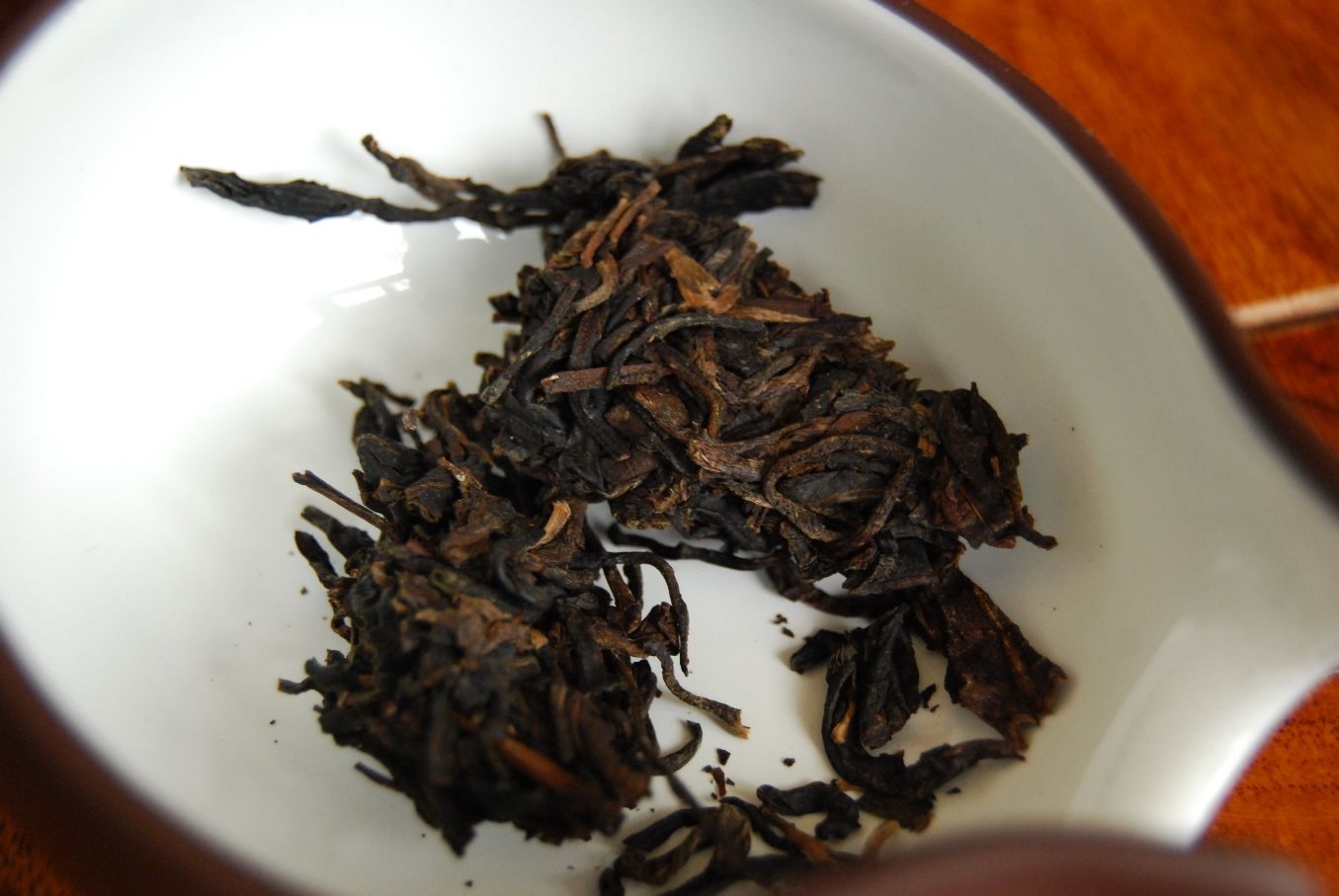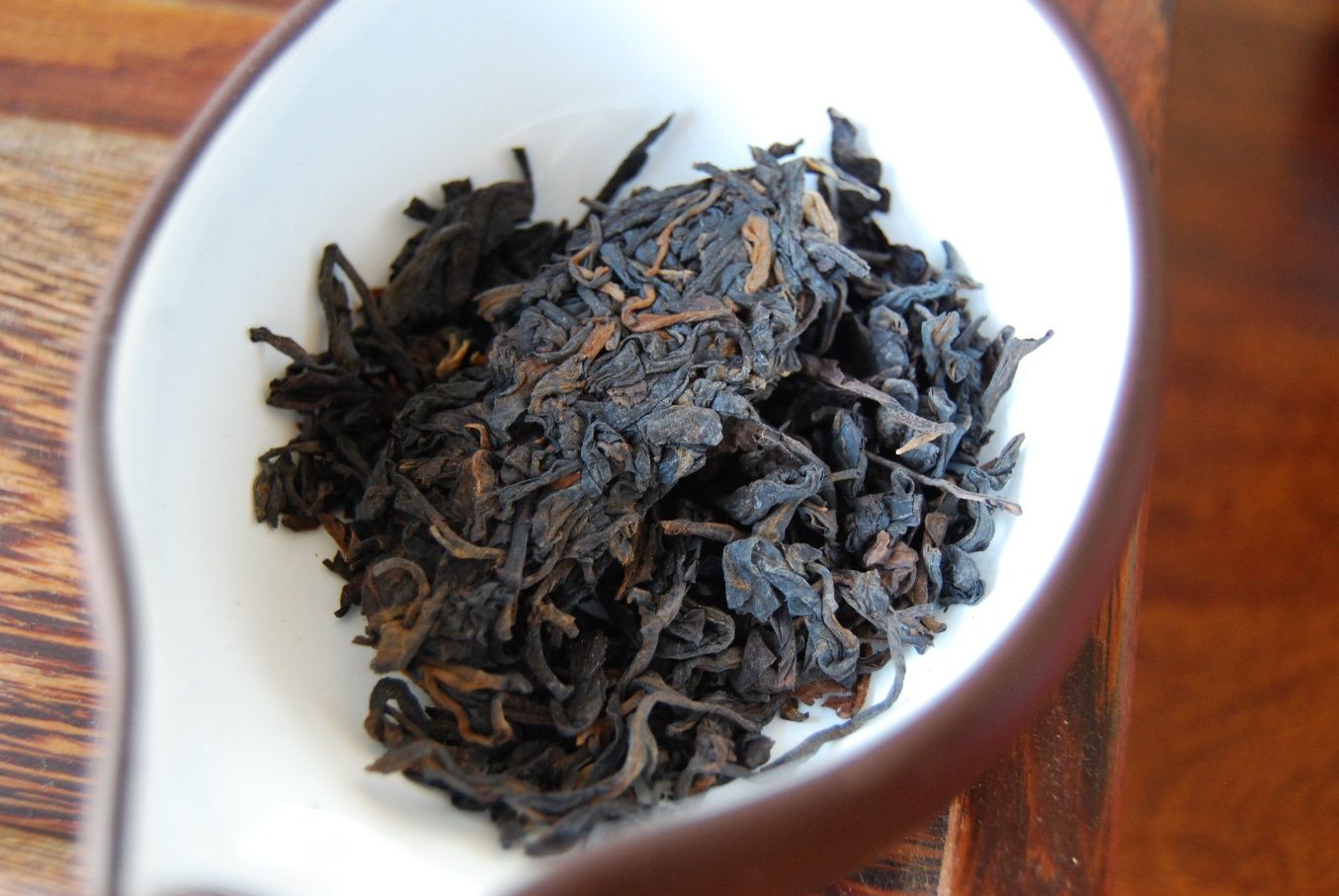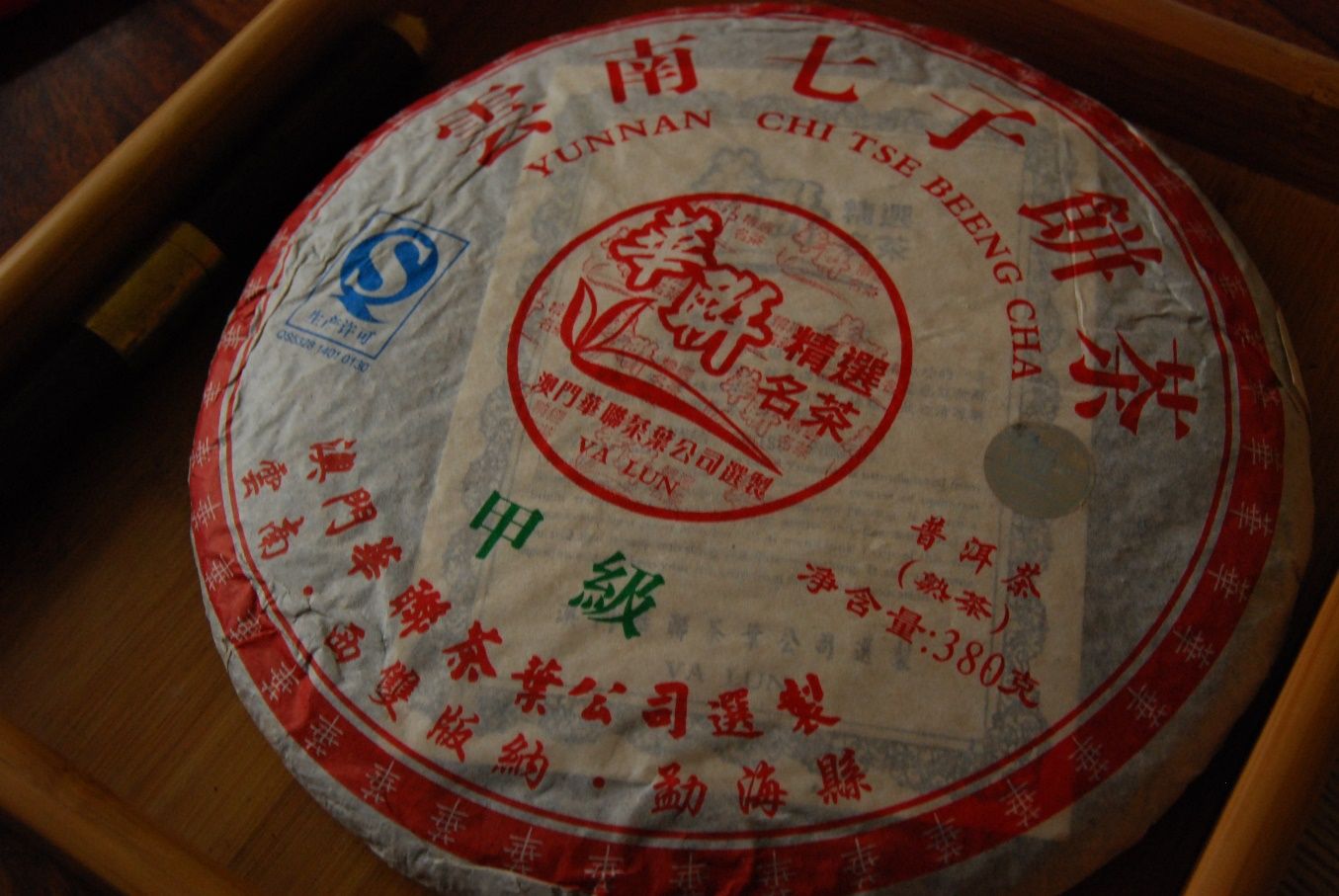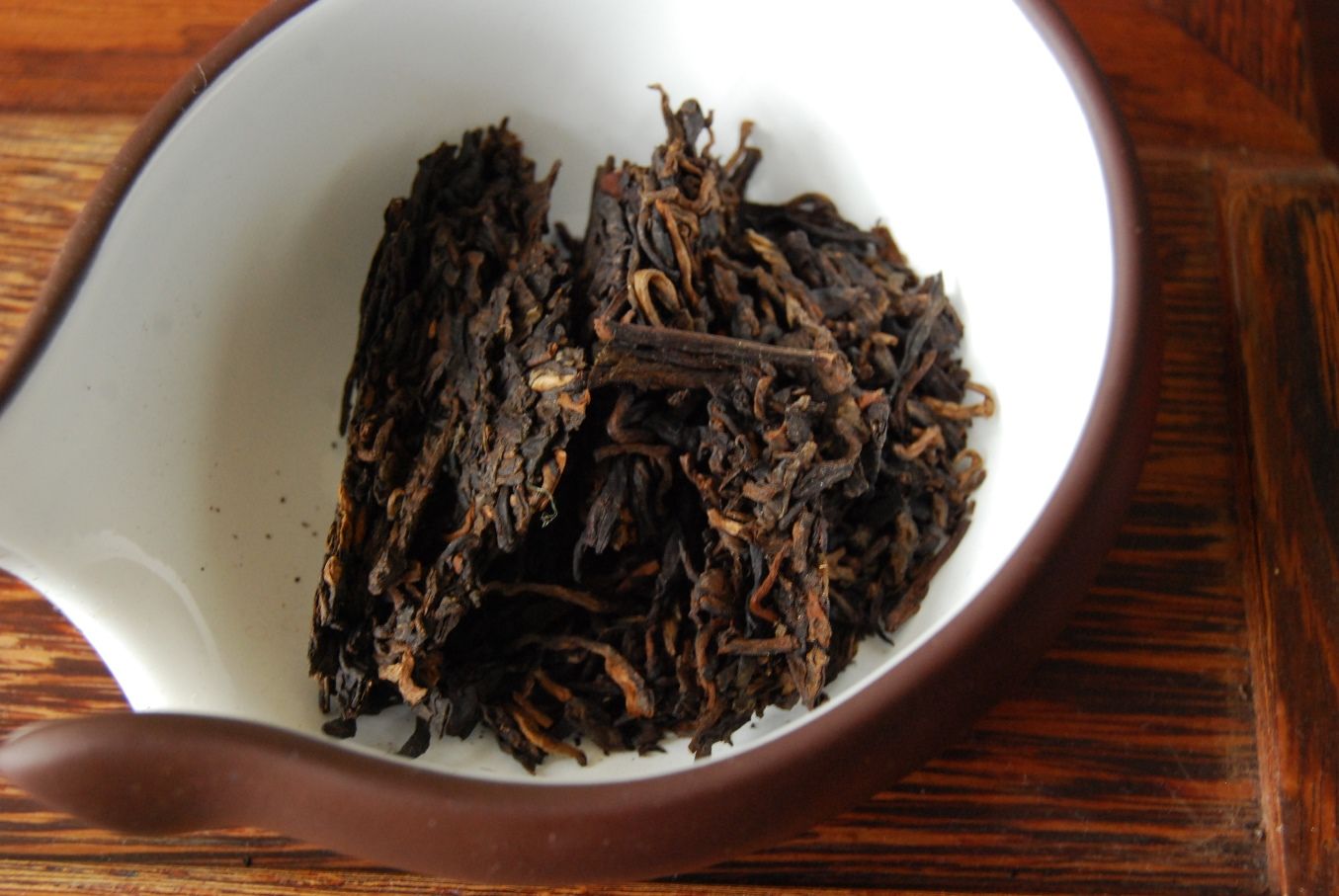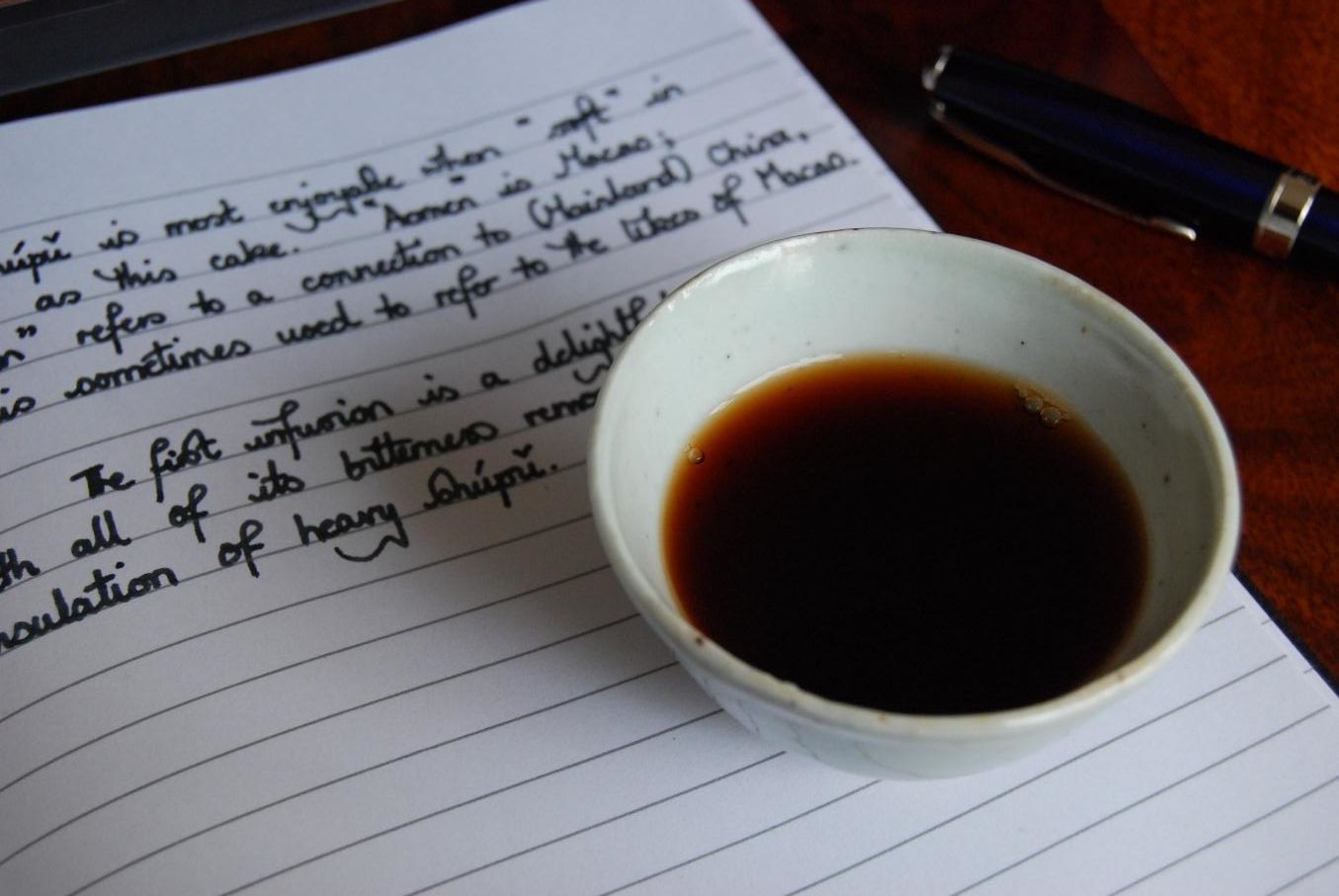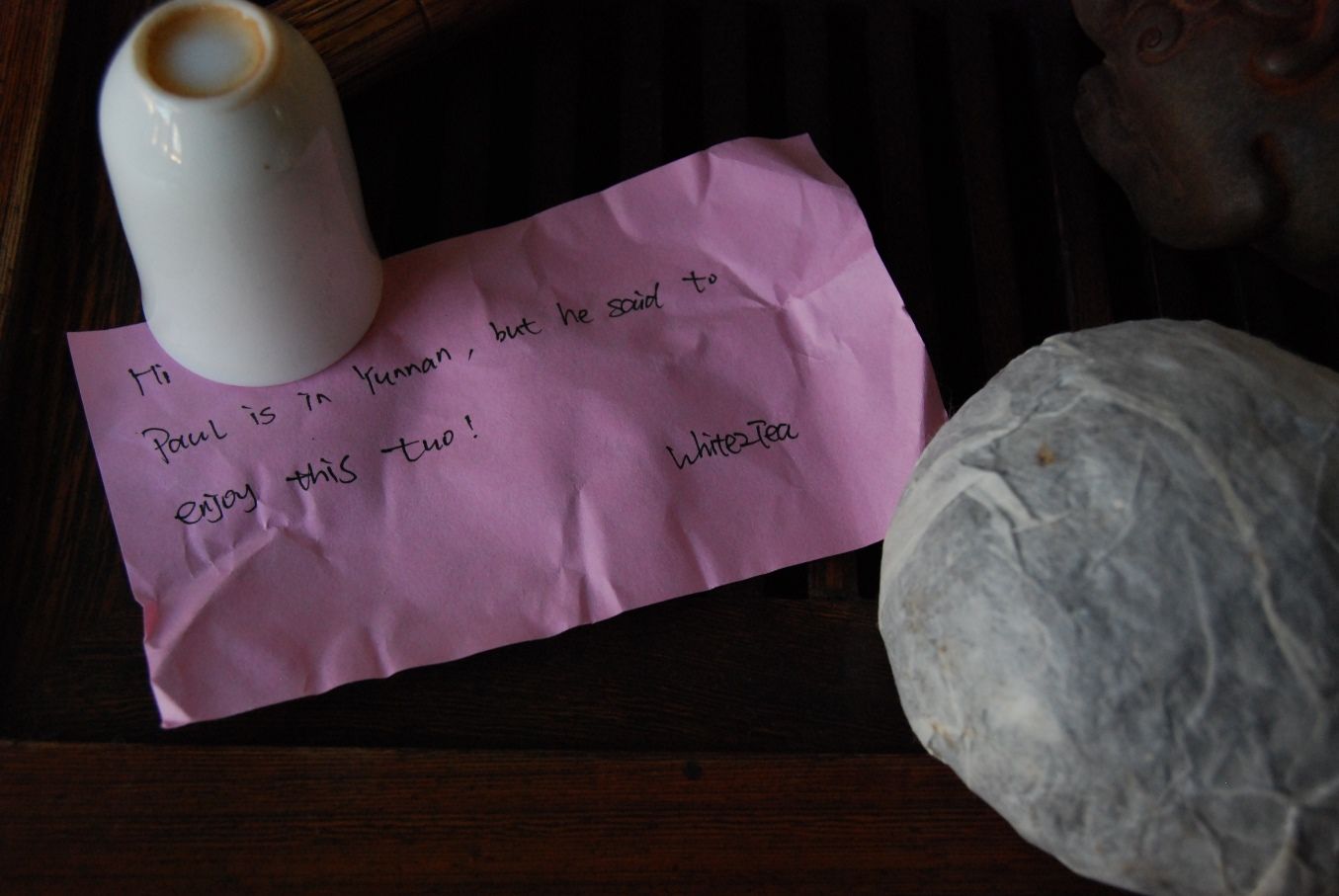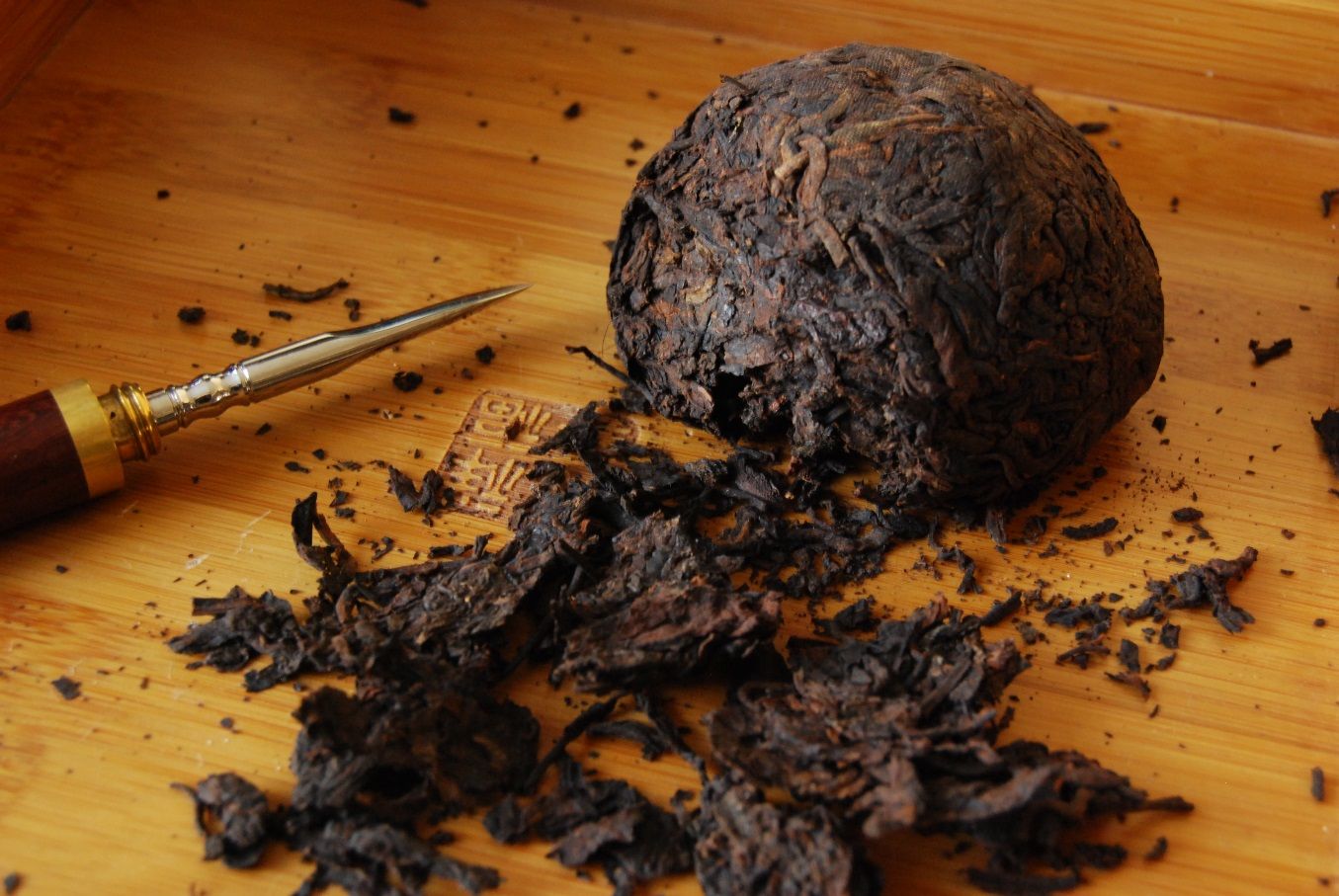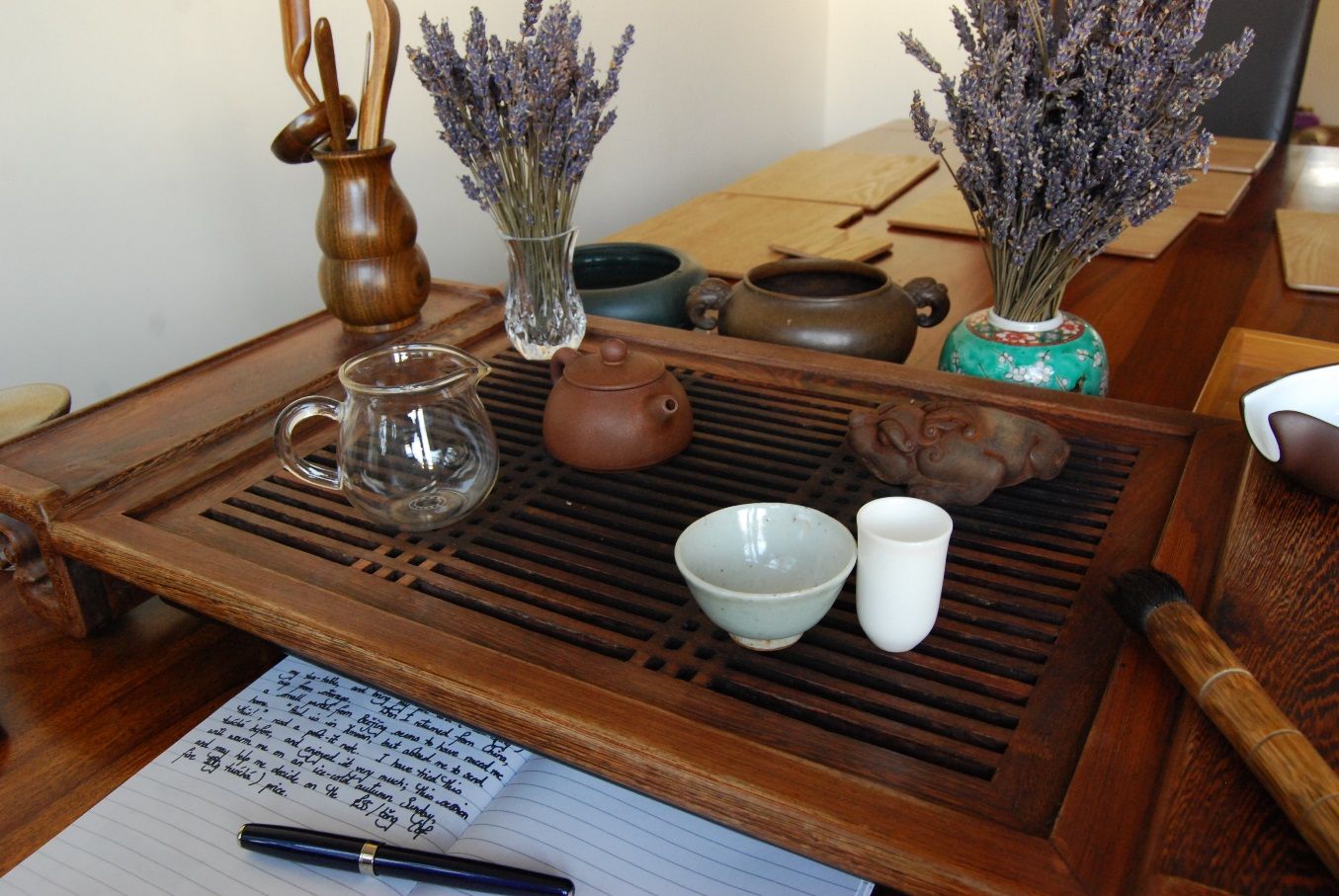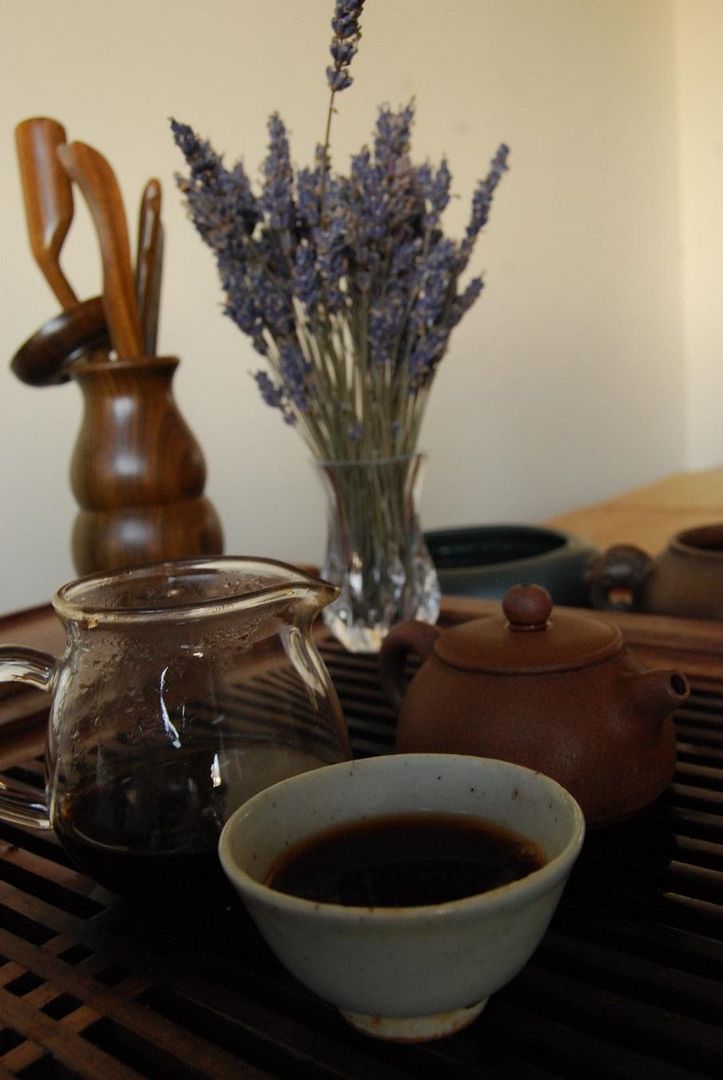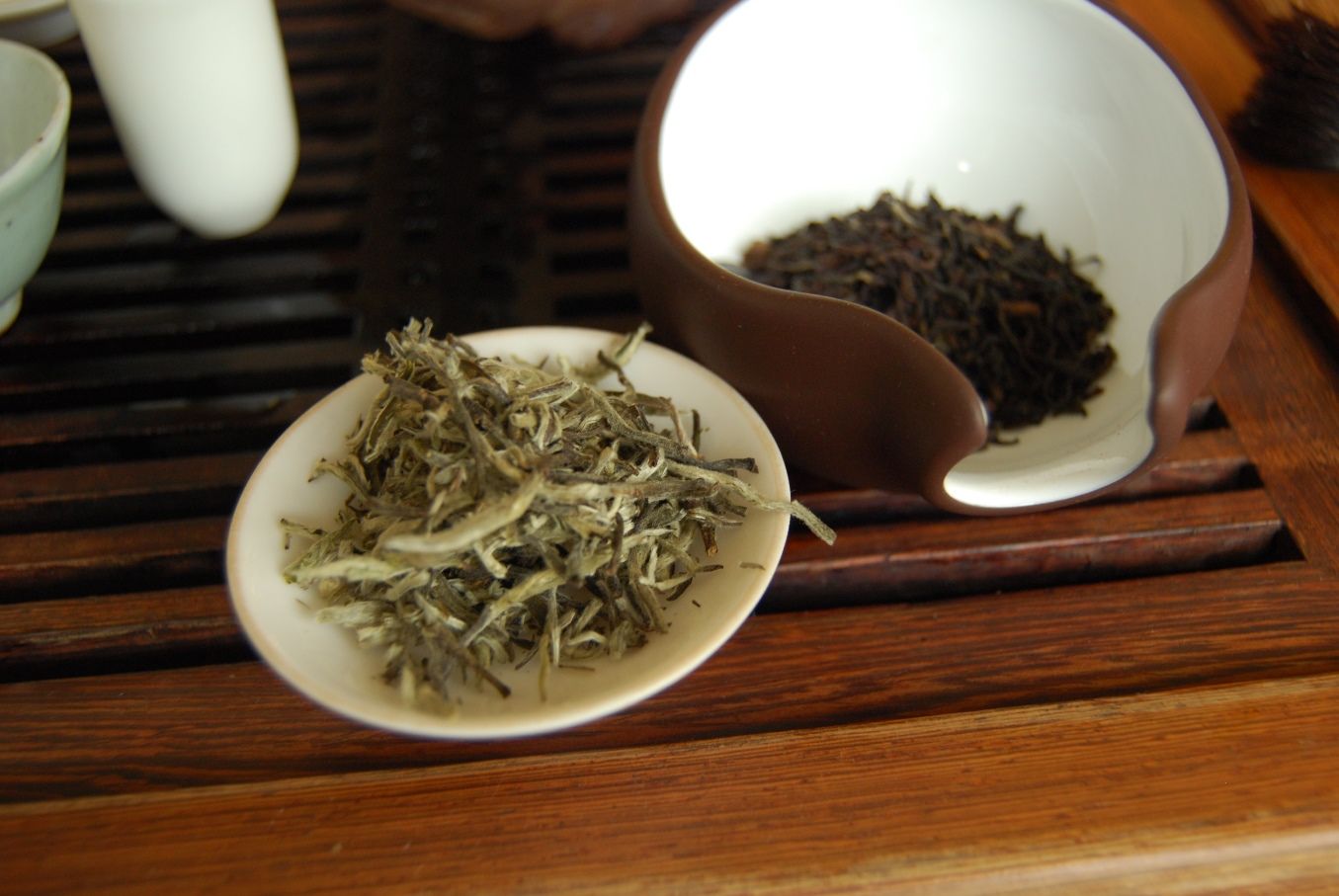In the popular vernacular, he is both "camouflaged chameleon", and, simultaenously, "ninjas scaling your building"*. You won't ever see him coming. And when you do, it's too late.
*No time to grab your gun, they already got your wife and children /
A hit was sent / from the President / to raid your residence /
'Cause you had secret evidence / and documents /
'Bout how they raped the continents
The greatest trick William of Bannacha ever pulled was convincing the world he didn't exist.
You might be enjoying your life, quiet like, all cosy. "Everything nice, everything routine." Then suddenly: blam, everything's changed, as an unmarked package from William of Bannacha drops through the letterbox.
It is the coming of the storm. And Jingmai is its name.
Regular readers will know that I'm not the world's biggest fan of prissy, elegant, delicate teas that are all gentility and precision. Jingmaishan teas, in my opinion, typically fall in this questionable category. They are "accessible". They're the kind of tea that you'd give to an acquaintance that you don't really like.
However, William of Bannacha, the aforementioned ninja scaling your building, has an angle. He may or may not have married into the Jingmaishan family tree, and he may or may not have contacts. The kind of contacts whom you might expect to associate with a ninja scaling your building. These contacts, perhaps unsurprisingly, know Jingmaishan pu'ercha the way your average Asian gangster clan knows white powder.
I think it's almost accurate to state that William of Bannacha, in between scaling your building, is the only person to have provided me with Jingmaishan tea that I can not just tolerate, but which I actually enjoy. His 2014 line-up is more of the same. Which is to say, that it is fine.
The first katana out of the saya from everyone's favourite building-scaling ninja is the 2014 "Jingmai Gushu". The clue is in the name: it's from Jingmai, and it's gushu.
Such is the extent of William of Bannacha's ninjutsu is that he even locates the origin of this tea down to the nearest square mile, specifically Dapingzhang tea garden, in Jingmaishan region. In a world in which we are often told that pu'ercha comes from "Yunnan", such specificity is refreshing.
As is the pricing of this stuff. William of Bannacha, upholding the honourable tradition of the bushido that governs his every action, prices his pu'ercha very (very) nicely.
This gushu version is fresh, sweet, and good. It's like Jingmai gone to Heaven. It has all the usual Jingmaishan nuttiness, and yet it still tastes nice. The finish is enduring, like a ninja running for tens of miles after his latest assassination mission. Where else can you get tea like this, these days?
Wasn't it Pliny the Elder who famously penned the phrase, translated into English, "Slice like a ninja, cut like a razor blade"? Surely, Pliny was reflecting on pu'ercha imported directly from a mysterious Jingmaishan-based mafia outfit.
I find it difficult even to pronounce the name of this tea, pictured above and below, which is named "Manghong" gushu. Coming in around the 60something Euro price-tag, William of Bannacha writes that Manghong character lies somewhere between the sweetness of Trad Jingmai and the bitterness of Mangjing (for which, see below). The leaves in this sample, pictured above, are eensy weensy, and remind me of Jinjunmei and the like.
Some of William of Bannacha's cakes are "red" in processing, and this seems to be deliberate. At the risk of meeting the business end of a casually-tossed shuriken*, I must confess that this variety of red processing is not really my thing. I'm not very happy with tons of oxidation, unless I'm explicitly drinking hongcha.
*Given the rotational symmetry of a shuriken, we might reasonably conclude that every end of a shuriken is the business end.
Sadly, this Manghong cake is "red", and that makes it very difficult to determine whether or not I like it.
The 2014 "Mangjing", however, is green, the way every ninja's mamma used to make.
In the Mangjing, too, I find ultimately solace. It is the Jingmaishan cake that it is OK to like. It is bigger, badder, rougher, and tougher, and packs something of a (one-inch) punch. Clean, fresh, silent, and deadly... when a ninja has finished scaling your proverbial building, you can rest assured that he reclines back at ninja HQ with a startlingly decent 2014 Mangjing.
You could probably dissolve the corpses of your victims in this stuff. It's really rather tasty.
Flat Tyres, No Brakes
flat tyre, no brakes
sweating, red-faced fresher
hands me his prep









